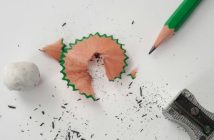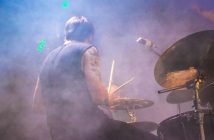
Some 50 kilometers to the northwest of Beijing, the great Yanshan mountain range parts abruptly like a theater curtain, opening into an enclosed basin of around 40 sqkm of peaceful, scenic countryside. When the great Ming Dynasty Emperor
Yongle arrived here early in the 15th century, he realized that he had at last found the ideal place for himself and his successors to practice rutu wei’an (入土为安), a traditional Chinese funeral practice. Over the next two centuries, a total of 13 imperial mausoleums (or shisanling 十三陵) were completed in the valley. The complex has in modern times undergone considerable restoration work, and while only three of the tombs are now open to public view, a visit to the site provides
an insight into the styles and obsessions of the age, as well as making for a pleasant day out in a picturesque valley away from the busy central suburbs.
Sacred Way 神道
Almost better known than the tombs themselves is the Sacred Way, the 7km pathway leading to the central tomb that was the official approach for the imperial coffins. In the middle of what is now an isolated field, visitors will find a large marble paifang gate, composed of six pillars and five entrances. This is the first of three archways, which were constructed in 1540. They are the largest of their kind that exists in China today. Following paifang is the Great Red Gate, or dahongmen.
A short walk leads to the Shengong Shengde Stele Pavilion, which houses a great stele (an upright stone pillar bearing an inscription) resting on the back of an enormous tortoise. Beyond the pavilion stands an odd but fascinating series of six animals and human statues on either side of the path.
Changling 长陵
Emperor Yongle’s own tomb was the first of the set and 600 years later, the restored tomb is still in splendid condition. The Central Hall of Eminent Favors, once the repository of the emperor’s finest possessions, has been converted into a museum exhibiting replicas of exhumed treasures.
The tomb itself is marked by a low, tree-covered hillock instead of an ultimate mausoleum building. Standing between the burial mound and the burial palace is the Soul Tower, a stone reconstruction of a wooden edifice that was struck by lightning in 1604. Climbing to the top of this – the tallest building in the tomb – will reveal the emperor’s stele, which serves as a kind of headstone for the grave.
Dingling 定陵
Dingling, the tenth imperial mausoleum and the first tomb of the group to be excavated, was the final resting place of the Wanli Emperor (1572-1620) and his two wives. In 1957, they were removed and their burial chamber was converted into an underground museum. The reconstruction of his grand cherry-red lacquer coffin and those of his empresses, lie in the rear hall behind a succession of marble thrones arranged in accordance with status with the emperor at the rear. Although there are a few reproductions of disentombed treasures similar to those on display in the tombs themselves, the nearby museum also contains some fascinating exhibits pertaining to the restoration of the Ming Tombs. The highlights are a detailed 3D model of the entire valley, and a miniature carved in wood of Changling’s Hall of Eminent Favors.
Zhaoling 昭陵
Following lines of tourists through Dingling and Changling, you may chance upon attractive views of other distant palaces across the valley. They are a fair walk away, but if you want to make the effort, you will be well-rewarded with encounters of grown-over versions of the main tombs. Only Zhaoling, the tomb of Emperor Zhu Zaigou, is open to the public – and with only a few restored halls, it is the most faithfully reconstructed of all three opened tombs.
Sacred Way 神道
Daily 7.30 am- 5.30pm. RMB 30 (Apr 1-Oct 31), RMB 20 (Nov 1-Mar 31). (8974 9383)
Changling 长陵
Daily 8.30am-5pm. RMB 45 (Apr 1-Oct 31) RMB 30 (Nov 1-Mar 31). (6076 1334)
Dingling 定陵
Daily 8.30am-5pm. RMB 65 (Apr 1-Oct 31), RMB 45 (Nov 1-Mar 31). (6076 1424)
Zhaoling 昭陵
Daily 8.30am-5pm. RMB 30 (Apr 1-Oct 31), RMB 20 (Nov 1-Mar 31). (6076 3104)
Ming Tombs 明十三陵
Daily 8.30am-5pm. Off-season: Nov 11-Mar 31, busy season: Apr 1-Oct 31. Foot of Yan Shan, Changping District (6076 1424, Chinese only) 昌平区燕山山麓
Getting there
Bus: Take the tourist bus from 6.30-8am from Tiananmen and Xuanwumen for RMB 170, but you must purchase tickets between 6.30-7.50am. You can purchase tickets the day before from the Beijing Hub of Tour Dispatch, which has three dispatch centers in Tiananmen Square and Xuanwumen (6601 5622, 5298 0138).
You can also catch buses from Tiananmen and Deshengmen to Dingling. Buses run between 6.30am and 10.30am, for around RMB 120 per ticket. You can also take bus 314 to the tombs (RMB 1.5, stops at Dingling and Changling). Otherwise, take bus 345 from Deshengmen to Dongguan in Changping and change to bus 314. Alternatively, catch the 5 or the 210 from Qianmen, then switch to the 872 for Dingling. The trip takes around three hours.
Car: From Madian Qiao on North Third Ring road, take Badaling Expressway to Changping Xiguan (西关) exit, and follow signs to the Ming Dynasty Tombs.
This article is excerpted from beijingkids April 2012 issue. View it in PDF form here or contact distribution@beijing-kids.com to find out where you can pick up your free copy.



